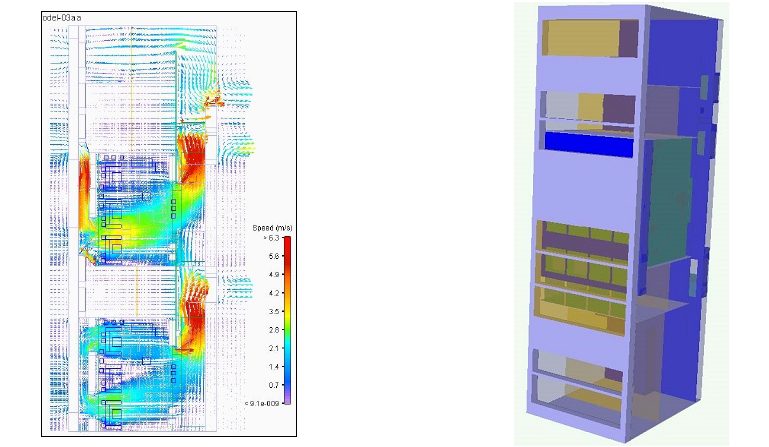Client Projects
Enterprise router
The challenge
The client approached European Thermodynamics with the problem of over-temperature BGA (ball grid array) devices embedded on a series vertical pcbs within a 60U tall, 19” rack. The total output was 2Kw and liquid cooling was not an option as the stakeholders within the project considered water or any other forms of liquid to be of high risk within the rack’s operating environment.
From the problem definition it was evident that the cabinet had been up-issued and it’s original design revisited several times, hence the original cabinet design was no longer adequate for the latest specification. Both the mainboard heatsink and forced convection strategy had to be approached.
The result
The thermal modelling team carried out initial baseline performance investigations in order to establish a reference point for the forthcoming solutions to be measured from. This was a challenging and engaging problem as both the forced convection and the heatsink design were concurrently developed as both affected the other significantly. Project plans and milestones for system design review with the client were of paramount importance as support and requests for subtle mechanical design of the cabinet were required in terms of balancing the inlet and outlet pressure drops with specific venting patterns required.
The team briefed our fan manufacturing partner to develop a specific fan that met the required PQ operating curve for the ‘tuned’ pressure drop across the newly design heatsink configuration. The fan venturi depth was adjusted including the impellor blade pitch and exhaust pattern in order to achieve the optimum PQ output and acoustic frequency as 16 fans were in a planar array, which significantly increases the acoustic noise power and broadband / pure-tone acoustic noise frequency spectrum for the ‘system’ noise. Further noise reducing techniques were employed including acoustic baffling, gasketing and positioning of the fans within the planar array in order to optimize the cones of influence between each fan.
The heatsink was finally optimized for manufacture as a two piece ‘jigsaw pattern’ heatsink that spanned the entire length of the board. Heat risers were designed in with a particular permutation of independent suspension push-pin configurations that helped to adhere the T-Global ‘TG-X’ thermal interface material (12w/m.k) and provide the required 30% deflection on the pads.
The vertical velocity fields shows the general airflow pattern (left) and the CFD (computational fluid dynamics) model (right) was used to model the prototype
